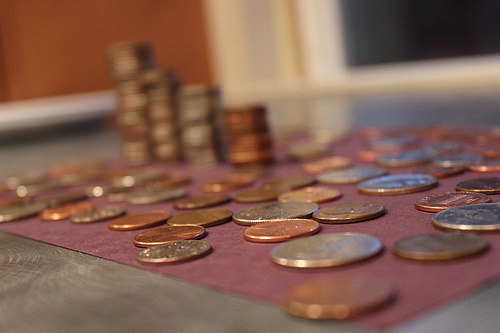A Simple Look at Quantitative Easing
Banks may decide not to lend out the money and instead to cushion up their balance sheets in anticipation of further economic uncertainty and further defaults by borrows.
Likewise, consumers and businesses might not want to borrow further, despite a decrease in the cost of borrowing, due to poor business and consumer sentiment. However, even if consumers are willing to borrow and spend the extra cash in the economy, money could be spent investing in speculative assets (rather than household consumption and business capital investments) or perhaps be used to invest overseas – both of which would not result in the desired output growth hoped for by the central bank.
How quantitative easing differs from printing money
Now, before you get too excited at the prospect of becoming a zillionaire due to your nation turning into the next Zimbabwe, there are a few key differences to note between quantitative easing and the black hole of printing money in order to fund federal debts and deficits.

Courtesy of CassadeyFedel
Firstly, the credit created during the process of quantitative easing is used to purchase long-term securities from financial institutions rather than merely printing money in order to finance government obligations. As this is a measure to combat deflation, it is a monetary policy measure that is in line with the central bank’s key goals. Printing money to pay off government creditors is not.
Additionally, this is a temporary policy primarily designed to stimulate growth in the economy, and once achieved, the purchased securities will be sold back into the free market.
In saying this, however, the choice between implementing and not implementing quantitative easing measures is truly a choice between bad and worse, and is a last resort monetary policy when the central bank’s back is against the wall. The outcome of inaction is declining economic growth and the risk of deflation, however, if properly managed, it results in greater consumption and output.
As you can see, a basic understanding of quantitative easing, the benefits and risks associated with it, and how this policy differs from merely printing money can be fairly simple. Hopefully this has cleared up any confusion you may have had about quantitative easing, and how it is actually different from Ben Bernanke throwing $85B worth of freshly minted Benjamins down Wall Street like some sort of Tyga music video. Who knows, maybe QE4 will be a little different.
Aziel is a second-year student at The University of Melbourne studying a Bachelor of Commerce majoring in Finance and Accounting. You can reach him at: au.linkedin.com/pub/aziel-goh/57/260/705/





























Share the post "A Simple Look at Quantitative Easing"